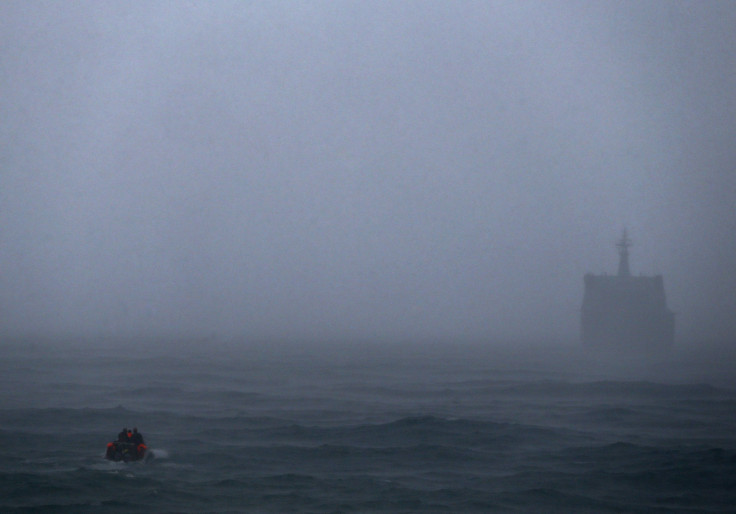AirAsia Flight 8501: Two More Bodies Found; 34 Bodies Recovered So Far But No Sign Of Black Box Yet

Two more bodies have been found in the Java Sea, where the search for the victims and wreckage of AirAsia Flight 8501, is concentrated, the chief of Indonesia's navy said, according to Channel News Asia. Divers resumed their efforts to identify the wreckage of the jet on Monday, while focusing on finding the plane's flight recorders, amid unreliable weather.
Abdul Aziz Jaafar reportedly said Monday that Malaysian ship KD Kasturi was recovering the two bodies from the sea. Thirty four bodies have so far been recovered and nine of them have been identified. Meanwhile, divers are working to retrieve five objects -- the biggest measuring 18 meters (59 feet) long by 5.4 meters (18 feet) and believed to be the fuselage -- located on the sea floor.
"If it cannot be done by divers, we will use sophisticated equipment with capabilities of tracking underwater objects and then will lift them up," Suryadi B. Supriyadi, director of operations for Indonesia's search and rescue agency, reportedly said. "But today's searching mission is still, once again, depend on the weather.”
Several attempts were reportedly made to locate the debris on Sunday but failed due to bad weather conditions.
“Our main task is still to find objects underwater, including the black box, as well as recovering both victims’ bodies and suspected plane debris,” Bambang Sulistyo, head of Indonesia’s search and rescue agency, reportedly said on Sunday. “We’ve tried to dive, but the weather is still unfriendly.”
Meanwhile, at least five vessels with equipment to detect the plane's black boxes -- which could help determine the cause of the crash -- have been deployed where the suspected plane debris is located, Supriyadi reportedly said. However, no signal has yet been detected from the flight data recorders, which are programmed to emit pings until about 30 days after an incident before their batteries run out.
Investigators hope the flight data recorder and cockpit recorder will provide answers to why the plane went down after the Airbus A320 vanished from radar on Dec. 28 on its way to Singapore from Surabaya, Indonesia. The plane was traveling at a height of 32,000 feet when the pilot requested a change of course to avoid bad weather, following which it lost contact with air traffic controllers.
A report released on Saturday by the Indonesian weather agency said the plane likely flew into storm clouds that may have caused icing and damage to the jet’s engines.
"This is, however, just one analysis of what likely happened based on available meteorological data, and is not the final determination on the cause of the incident," the report said.
On Sunday, the daughter of Captain Irianto urged people, in a televised appearance, not to blame her father for the crash.
"He is just a victim and has not been found yet. My family is now mourning," Angela Anggi Ranastianis, 22, told TV One, according to Channel News Asia. "As a daughter, I cannot accept it. No pilot will harm his passengers.”
© Copyright IBTimes 2024. All rights reserved.











